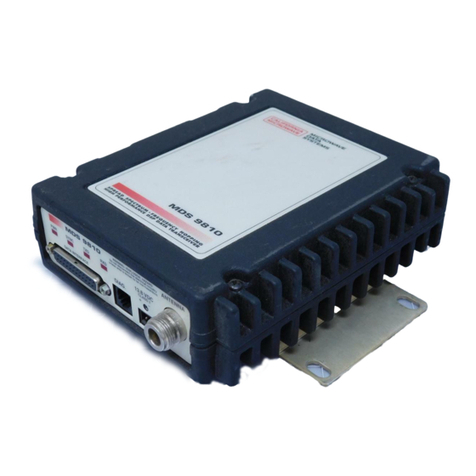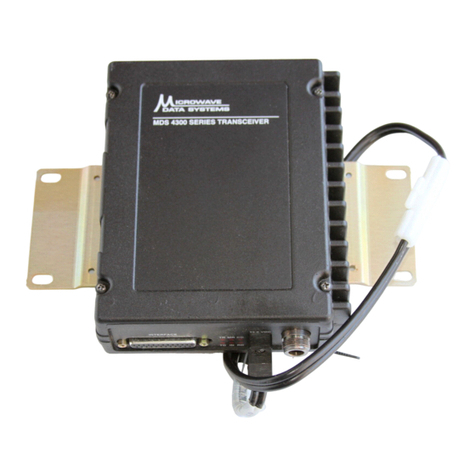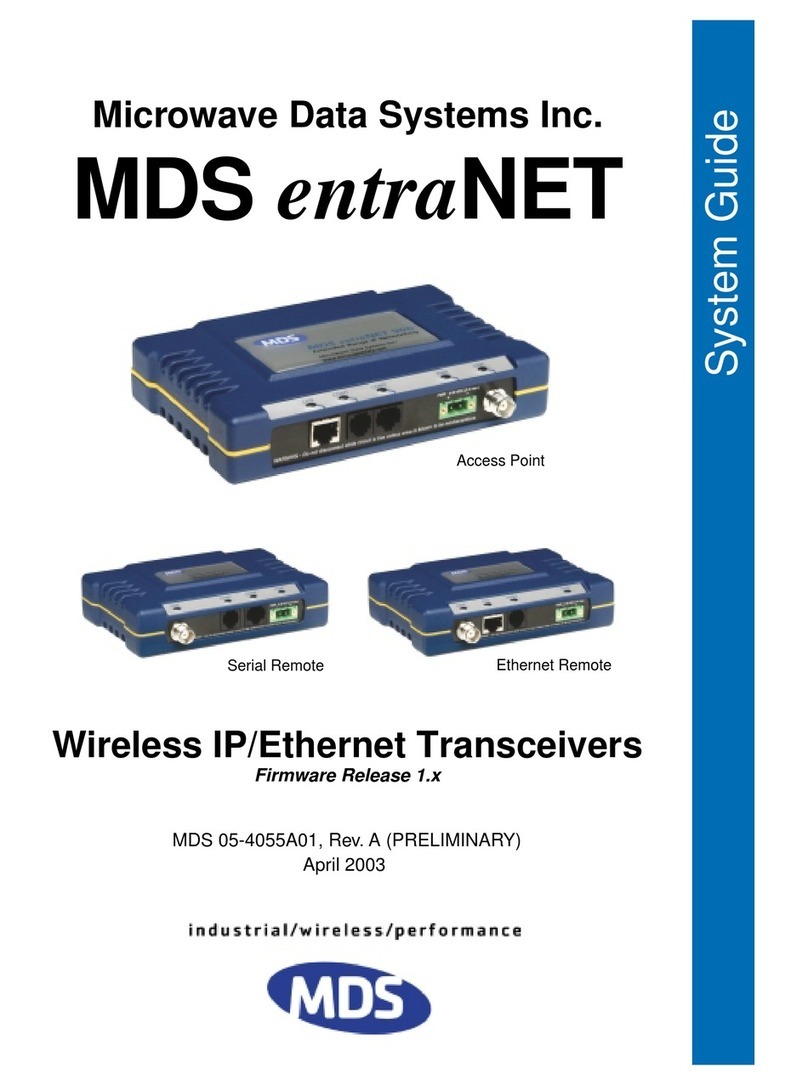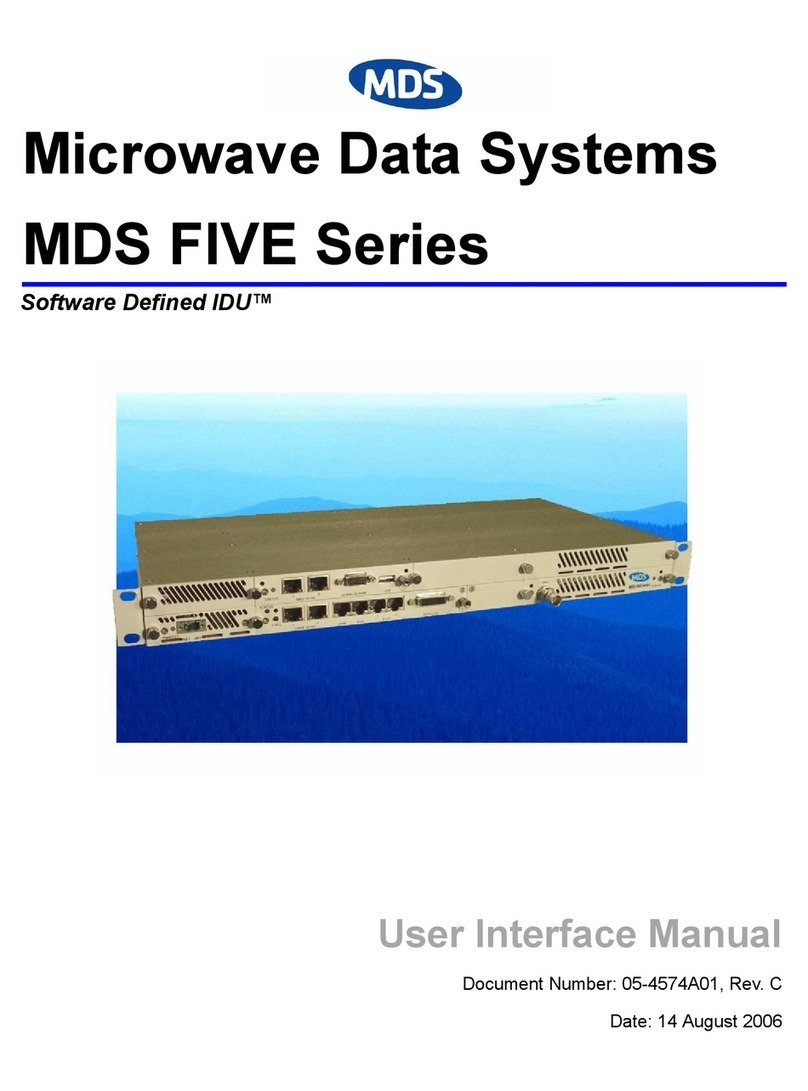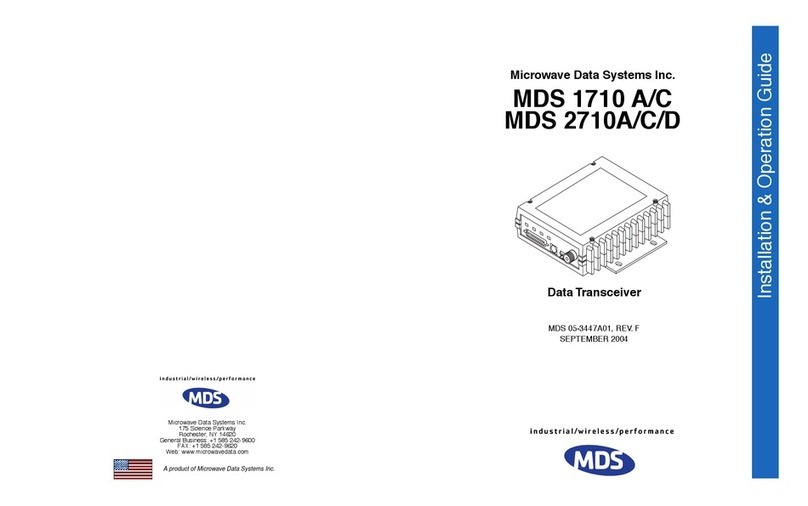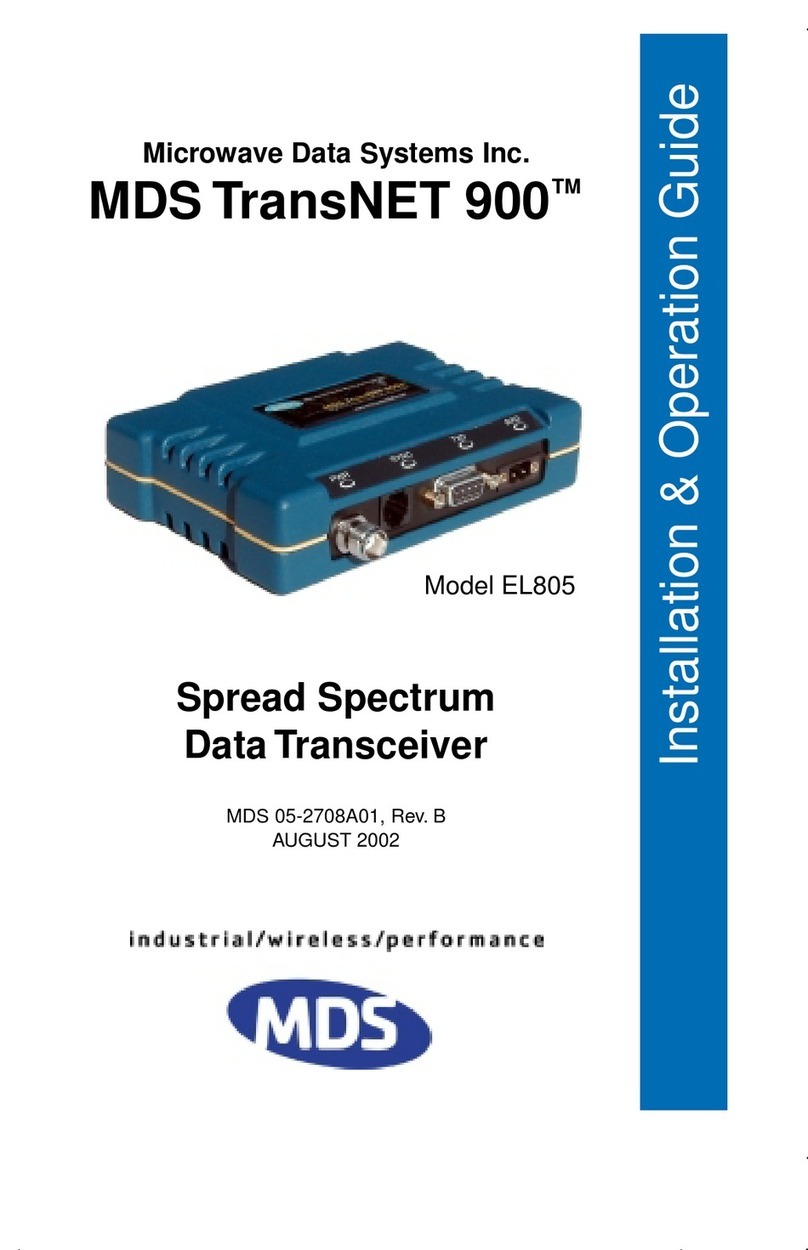
MDS 05-2873A01, Rev.A MDS
i
Net 900 Installation and Operation Guide iii
DRAFT 6—8/29/01
Serviceability of this Manual
While every reasonable effort has been made to ensure the accuracy of
this manual, product improvements may result in minor differences
between the manual and the product shipped to you. If you have addi-
tional questions or need an exact specification for a product, please con-
tactour Customer Service Team usingthe information at thebackof this
guide. Microwave Data Systems Incorporated reserves its right to cor-
rect any errors and omissions. Updated information may also be avail-
able on our Web site at www.microwavedata.com.
Operational Safety Notices
The radio equipment described in this guide emits radio frequency
energy. Although the power level is low, the concentrated energy from
a directional antenna may pose a health hazard. Do not allow people to
come within two meters (6 feet) of the antenna when the transmitter is
operating.
This manual is intended to guide a professional installer in installing,
operating and performing basic system maintenance on the described
equipment.
FM/UL/CSA Notice
MDS
i
Net 900 When Approved
This product is available for use in Class I, Division 2, Groups A, B,
C & D Hazardous Locations. Such locations are defined in Article 500
of the National Fire Protection Association (NFPA) publication NFPA
70, otherwise known as the National Electrical Code.
Thetransceiver has beenrecognized for usein these hazardous locations
by three independent agencies —Underwriters Laboratories (UL), Fac-
tory Mutual Research Corporation (FMRC) and the Canadian Standards
Association (CSA). The UL certification for the transceiver is as a Rec-
ognized Component for use in these hazardous locations, in accordance
with UL Standard 1604. The FMRC Approval is in accordance with
FMRC Standard 3611. The CSA Certification is in accordance with
CSA STD C22.2 No. 213-M1987.
FM/UL/CSA Conditions of Approval
MDS
i
Net 900 When Approved
The transceiver is not acceptable as a stand-alone unit for use in the haz-
ardous locations described above. It must either be mounted within
anotherpiece of equipment which iscertified for hazardous locations, or
installed within guidelines, or conditions of approval, as set forth by the
approving agencies. These conditions of approval are as follows:
1. The transceiver must be mounted within a separate enclosure which
is suitable for the intended application.
RF Exposure
